Troubleshooting O-Ring Failures
August 27th at 9:29am
Like any device subjected to errors in installation or exposure to high stresses, O-rings too are liable to failure. Different materials of O-rings have different shell life. Shell life for materials like natural rubber, polybutadiene and polyurethane (millable) usually have a shell life of five years whereas, materials like HNBR, Butyl and Nitrile have a shell life of fifteen years. Some materials such as Fluorocarbons, Fluorosilicate, silicone and Ethylene propylene are said to have an unlimited shell life. Despite have long shell life, the O-rings can fail to perform effectively in just matter of days. O-rings usually fail due to the combination of various effects acting on the ring. Below is the list of the categories that makes the O-rings to fail:
- Incorrect selection of O-rings size
- Improper installation of O-ring
- Insufficient lubrication to O-ring
- Incompatible O-ring material
|
It is important to visually inspect the damaged O-Rings to find potential causes of it's failure. Below are some of the symptons. related causes, and ways to troubleshoot and correct such O-Ring failures.
Nibbing/ExtrusionNibbing or extrusion is one of the main causes for the failure of the dynamic seals. Hydraulic rod and Piston seals are one of the most affected seals by extrusion or nibbing. Extrusion and nibbing is also sometimes found in static seals due to high pressurization. A. Causes- Subjected to high pressure
- O-ring material too soft
- High clearance
B. TroubleshootingThe extrusion in the O-rings can be avoided using the following techniques; - Replacement of O-ring with a much more harder material
- Decreasing the clearance of the gland
Using back-up devices in order to lower stresses on the O-ring | 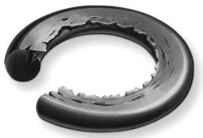
|
Compression SetOne of the most common reasons for O-rings failure is compression setting of the rings. For an effective seal to be formed, it is crucial that there is a continuous seal line between the O-ring and the gland surface. The O-ring must maintain its integrity without excessive deformation in order for the seal to be effective. There are several factors that results in the compression set failure in the O-rings; A. Causes- Improper gland design
- O-ring subjected to high temperature
- Incomplete curing of O-ring during production
- Incompatibility of O-ring with the fluid
B. Troubleshooting- Using a ‘Low Set’ material for the O-ring
- Reducing Operating temperature subjected to the O-rings
- Selecting a compatible O-ring material
- Avoid heat-ups due to friction at the sealed joints
| 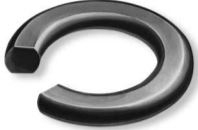 |
Spiral failureSpiral failure of the O-rings are usually found on the seals of long stroke hydraulic piston or rod seals. Spiral failure occurs when the O-ring hangs-up at one point across its diameter and slides and rolls simultaneously. Factors that may cause spiral failure of the O-rings are as follows; A. Causes- Side loads to the O-rings
- O-ring material too soft
- Uneven surface finish at the glands
- Improper installations
B. Troubleshooting- Improvement of surface finish at the glands
- Proper lubrication of the O-rings and the glands
- Replacing the softer O-rings with a harder one
- Changing the size of the O-rings
| 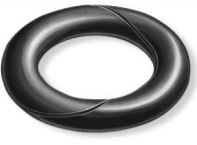 |
Explosive decompressionWith the rise of space travel in the recent years, O-rings failure due to explosive decompression is one the rise. Explosive decompression is also termed as O-ring embolism. Once the seals are operated under high pressure for a certain period and then reduced to low pressure too rapidly, the gas trapped internally in the O-rings expands causing ruptures on the O-rings and affecting the integrity of the seal adversely. A. Causes- Sudden decrease in the system compression
- High pressure being trapped in the internal structure of the seal glands
- Increasing the decompression time
- Selecting a seal material resistant to explosive decompression
B. Troubleshooting- Increasing the decompression time
- Selecting a seal material resistant to explosive decompression
| 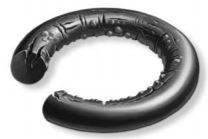
|
AbrasionAbrasion is also one the most know causes for the failure of the O-ring seals. Abrasion can be found in seals that are dynamic either in oscillation, rotary or reciprocating motion. The possible causes of O-rings are as follows; A. Causes- Insufficient lubrication by the system fluid
- Exposure to high temperatures
- Contamination of the glands by the system fluid
- Dynamic seal with a rough finish
B. Troubleshooting- Use of internally lubricated O-rings in order to reduce wear and tear
- Using a much more improved abrasion resistance O-ring
- Polishing the glands of the dynamic seal in order to reduce friction between the gland and the O-rings
- Using high temperature resistant O-ring
| 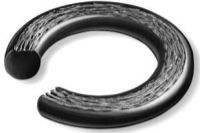 |
Installation damageO-rings are precision devices that may fail to perform effectively if not installed with proper care and selection. Some of the causes for O-rings to fail attributed to improper installation are as follows; A. Causes- Insufficient lead-in chamfer
- O-ring too big as compared to the gland size
- O-ring pinched during installation
- Insufficient lubrication
- Human error while installation
B. Troubleshooting- Make a 20° lead-in chamfer
- Make sure that the O-ring is of correct size and material
- Using adequate lubrication before installation
- Follow the procedure once installing the O-rings
| 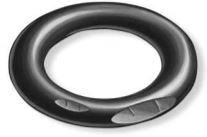 |
Chemical DegradationChemical degradation in O-rings can be seen in joint having toxic chemicals. The degradation of the O-ring is caused by the chemical reaction between the O-ring and the fluid the seal is holding. This can occur at room temperature or high temperatures. Changes in physical properties such as the size or shape of ring are visible. A. Causes- Incompatibility with the fluid seal
- Exposing the seal to high temperature
B. TroubleshootingUsing the O-rings that are compatible with the chemical it is sealing Selecting a high temperature resistant | 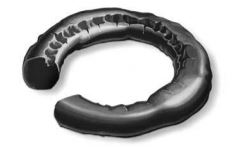
|
Weathering/ Ozone crackingWeathering or ozone cracking can be seen in seals that are exposed to UV light, ozone or air pollutants. Ozone cracking in the O-rings can be recognized by small surface cracks that are perpendicular to the direction of stress. A. Causes- Exposure to ozone
- UV radiation
- Containment by air pollutants
B. TroubleshootingPeriodic replacement of the O-rings Protecting the seal inside a compartment | 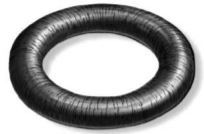 |
Thermal degradationThermal degradation in the O-rings can be seen visibly on seals having rapid changes in the ambient temperature of the seal. The thermal degradation on the O-ring can be categorized by the radial cracks visibly on the side exposed to higher temperature. O-rings also softens further degrading the performance. A. Causes- Elastomer having poor thermal properties
- Rapid changes in the temperature surrounding the seal
B. Troubleshooting- Using a O-ring that is more thermal resistant
- Using a harder O-ring for the application
| 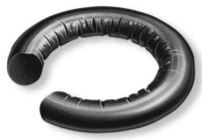 |
Plasticizer extractionPlasticizer extraction is the deformation of the O-ring due to the deterioration of its elastomer. Plasticizer extraction can be determined by the decrease in the cross-section of the O-ring. A. Causes- Improper curing of elastomer
- Low hardness of the O-ring
- High vacuum level
B. Troubleshooting- Replacing the O-ring to a better quality one
- Using a O-ring with more hardness
| 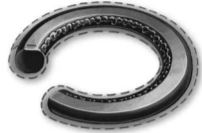 |
At Phelps, we offer a wide range of Metric as well as American standard sized O-Rings in various materials. Please call our sealing experts @ 1-800-876-SEAL with you questions and fluid sealing requirements.
Other Posts
ElastaGraph - A Revolutionary Metal Gasket Technology
Read ArticleHow do IMPA Marine Numbers Map to Phelps Industrial's Products
Read ArticleHow to chose O-Ring material for your fluid sealing applications
Read ArticleWhich industrial sealant is right for your application
Read Article












